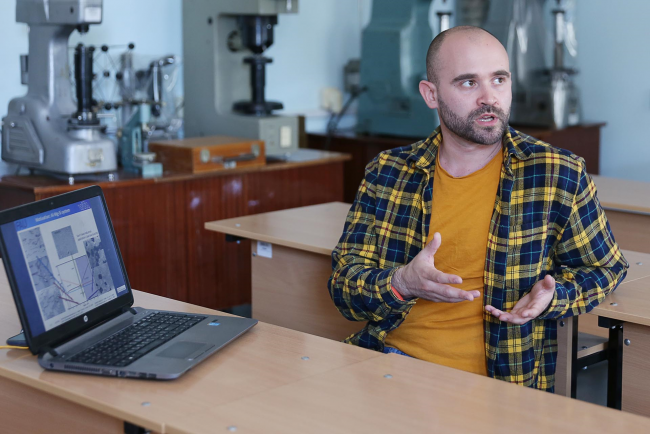Young scientist Alexander Trudonoshin proposes various alloying options based on Al-Mg-Si.
One of the key directions of research activities of the Department of Materials Science and Design Fundamentals of Vyatka State University is the development of casting alloyed alloys, including those based on "aluminum - magnesium - silicon". Aimed at increasing strength and practicality, they suggest various alloying options, a number of which were proposed by graduate student Alexander Trudonoshin under the guidance of Professor Alexander Skvortsov.
Casting alloys based on aluminum contain magnesium and silicon in a special ratio (2: 1), forming the Mg2Si compound. It is a promising intermetallic compound that is used as a hardening phase in Al-Mg-Si alloys. Mg2Si has a low density (1.88 g / cm3) and a high Young's modulus (120 GPa).
In the process of working on improving the properties of aluminum alloys, various alloying additives were considered.
The researcher was interested in how different alloying elements with low density can affect the quality of the alloy: scandium (2.99 g / cm3), boron (2.34 g / cm3), silicon (2.33 g / cm3), beryllium (1, 84 g / cm3), magnesium (1.74 g / cm3), lithium (0.53 g / cm3).
- Of greatest interest for avia and space industries are alloys with scandium and lithium. However, the addition of scandium, although it brings a significant - up to 50 percent - improvement in properties, is not advisable due to the high price -
concluded Alexander Trudonoshin.
----------
Element
Price $ / kg
Used concentrations for alloys,%
Price increase,%
----------
As for lithium, every 1% of this element reduces the density of the alloy by 3%, increases Young's modulus by 6% and significantly increases the strength. Despite this, in modern production, only wrought Al-Li alloys are used - the VyatSU scientist gave a chance to castable ones, considering them underestimated in the development of modern vehicles.
- Using various modes of heat treatment, it is possible to achieve the necessary combination of mechanical properties of alloys, which is caused by the layering of the effects of precipitation hardening of Al-Mg-Si alloys and Li-containing dispersed precipitates, -
told Alexander Trudonoshin.
Research instinct prompted Alexander Trudonoshin to pay attention to alloys based on Al-Mg-Zn, where the phase of the last two elements significantly affects the increase in strength. By adding a small amount of zinc to a casting alloy based on Al-Mg-Si, the scientist obtained nanodispersed particles of magnesium-zinc compounds in the structure, eventually increasing the strength of the alloy by 25-30 percent. And after heat treatment of the alloy, its ductility also increased by 20 percent.
Several articles of the researcher are devoted to the study of the effect of zinc on the Al-Mg-Si system in casting alloys, including "Heat treatment of high-pressure die casting Al-Mg-Si-Mn-Zn alloys" in the prestigious Journal of Alloys and Compounds.
Alexander Trudonoshin said that a small number of research groups are engaged in such problems in the world, in particular in Great Britain and Iran. The new alloy has no analogues and will be able to seriously compete with those already existing in a wide range of applications, including automotive, aviation, and rocket industries.
Photo, illustrations: A.I. Trudonoshin; table "Influence of the price of additives on the price of alloys"; strengthening nanosized particles (zinc alloy, lithium alloy).
Translated by Artemij Sizov

